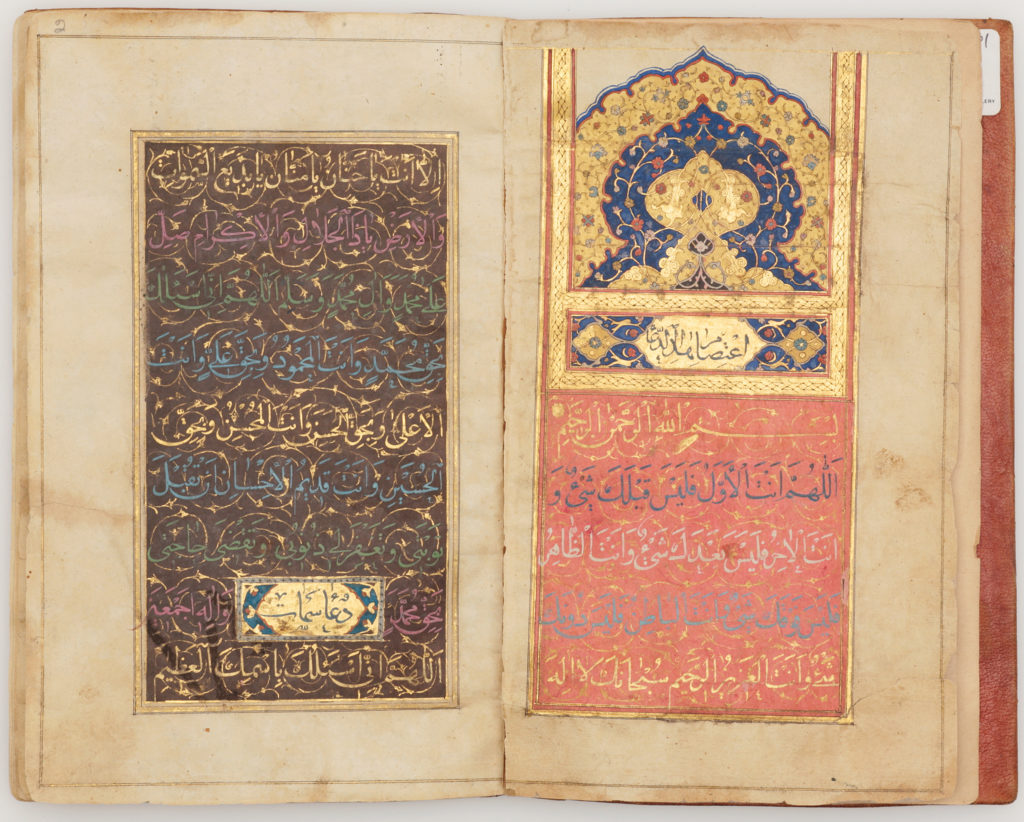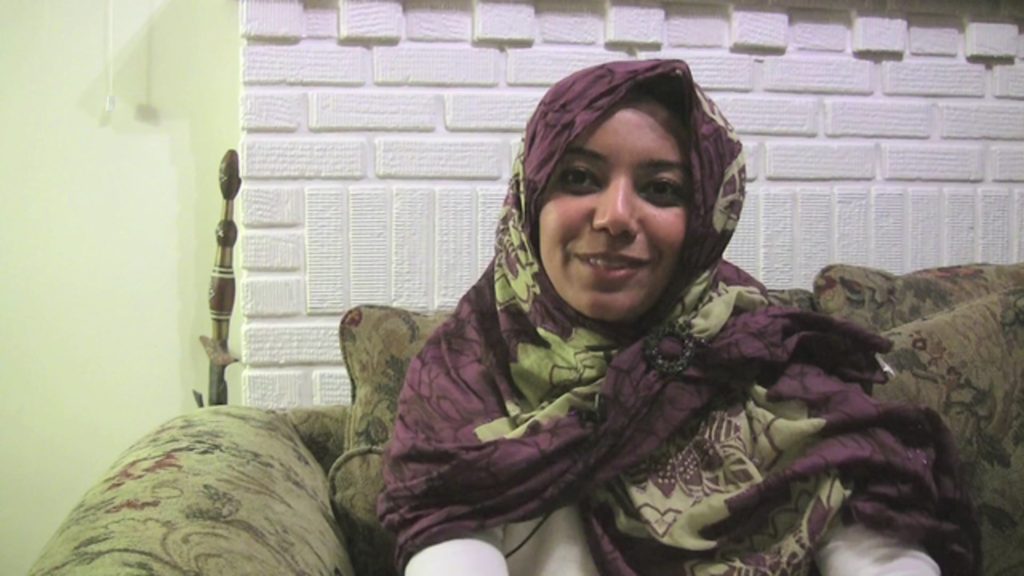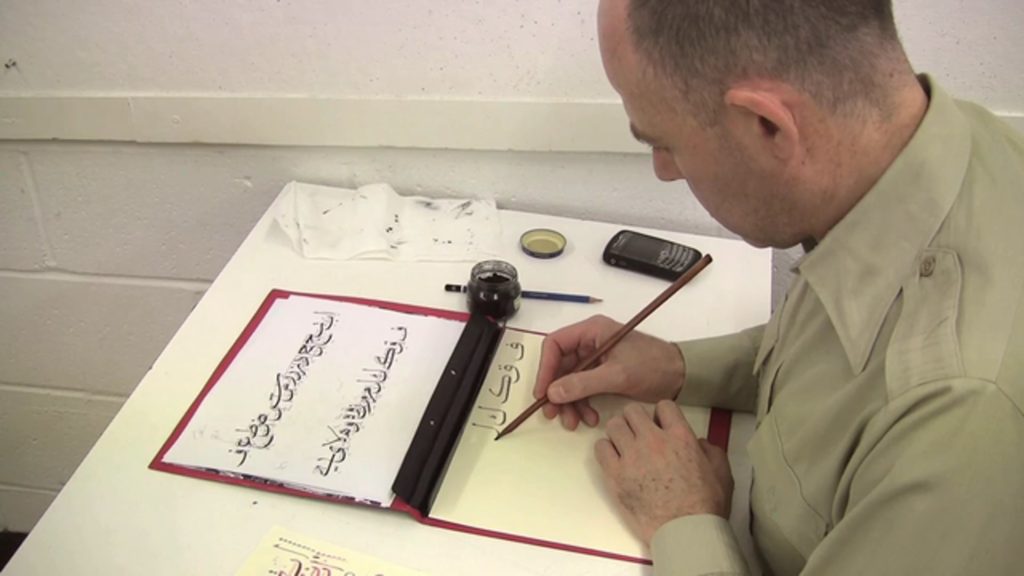Becoming a calligrapher
What makes a good calligrapher?
There are no shortcuts to good calligraphy. To learn this art form, you will need good examples to work from, a teacher to guide you, an eye for detail and the discipline to practice regularly.
The best calligraphers achieve the “breath-like flow,” described by the Turkish scholar Mahmud Yazir in his book, Calligraphy in World Civilization and the Beauty of the Pen in Islamic Civilization (translated from the original Turkish by Mohamed Zakariya). This flow gives your pen strokes elegance and life, and transforms lines on paper into art.
In Arabic script calligraphy, the individual artistic expression of a specific calligrapher is discouraged. As in many musical forms, the artist’s aim is to closely replicate the work of a master. This perspective differs from Chinese and Japanese calligraphy traditions, in which calligraphy is viewed as the personal expression of an individual artist.
Although the principles of calligraphy can be learned with enough time and practice, true mastery requires more than just technical skill. In the final analysis, calligraphy is an art form, and great masters were born to it.
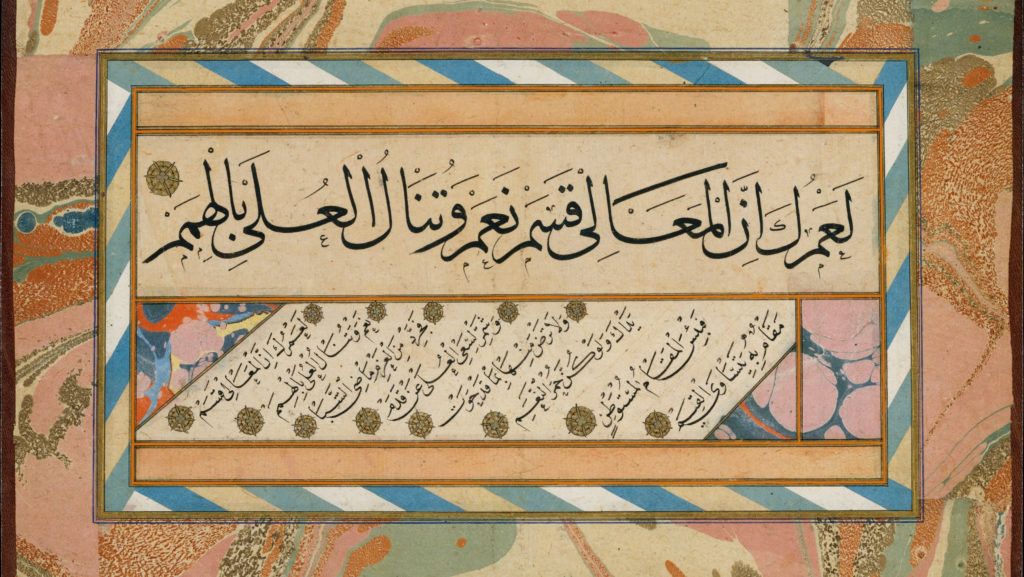
Interviews with student calligraphers
Who became a calligrapher?
Traditionally, the practice of calligraphy could be found among caliphs, sultans, viziers, sheikhs, imams, teachers, businessmen, soldiers and many other professions. Calligraphy skills often stayed within families, and were usually passed down from father to son. It was not uncommon to find entire families who earned their livelihoods as calligraphers.
If a young person (most often a male) demonstrated artistic potential, he would be chosen to study under a master calligraphy and learn the basic scripts. He would also be trained in related arts such as ink-making, paper-making and illuminating. Most of his time, however, was spent copying the work of the master, until he was good enough to work on his own. At this point, he would be awarded with a certificate or license (ijaza) that allowed him to teach and practice on his own.
Calligraphers entered a variety of trades. They could become papermakers, gilders (artisans who worked with gold), illuminators, stationers, scribes, binders, librarians, or government clerks. Most often, calligraphers specialized in the writing of the Qur’an or worked for the government, usually as part of the royal chancery (the office that produced official documents of state).
Royalty also practiced calligraphy, since it was an esteemed art form. The Ottoman sultans Bayezid II (1481-1512), Ahmed II (1642-1695), Mustafa II (1664-1703) and Mahmud II (1785-1839) studied calligraphy with various masters. Starting in the 19th century, calligraphy was a regular part of the Ottoman crown princes’ education. The Mughal emperors Jahangir (1569-1627) and Shah Jahan (1592-1666) were also avid practitioners and collectors of calligraphy.
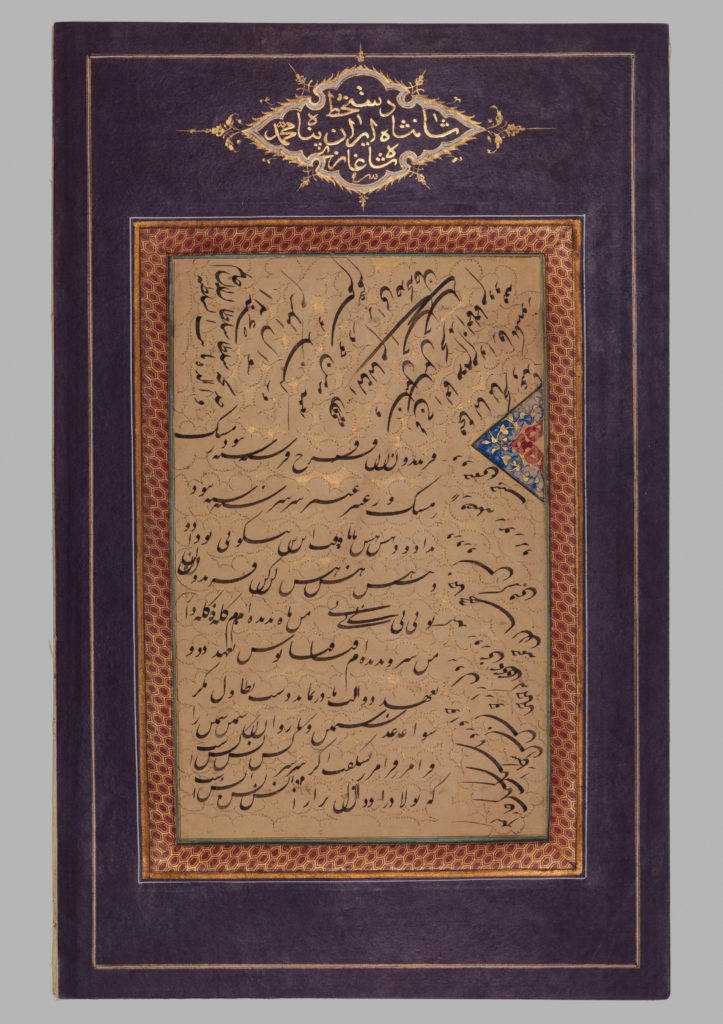
Where are the women calligraphers?
Like many professional trades, skill in calligraphy tended to be passed down through families, from father to son. In most of the societies in which Arabic script calligraphy was practiced, it was relatively uncommon for women to practice a trade, so we find fewer examples of their calligraphic work.
There were, however, a few women practicing calligraphy as early as the 10th century. In fact, the great calligrapher Yaqut al-Musta‘simi studied calligraphy with a woman named Shuhda Bint Al-‘Ibari, a student in the direct line from Ibn al-Bawwab.
Princesses during the Qajar dynasty (1779-1925) in Iran were taught calligraphy. Princess Ziya al-Saltanat, in particular, possessed great skill and was placed in charge of her father’s correspondence. She also wrote many fine Qur’anic manuscripts.
In the Ottoman tradition, calligrapher Mahmud Celaleddin (?-1829)’s wife and pupil Esma Ibret Hanim (1780-?) surpassed her husband in producing elegant work in the thuluth and naskh scripts.
Today it is common to find women studying calligraphy, especially in Turkey and Iran.
